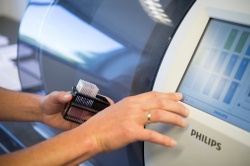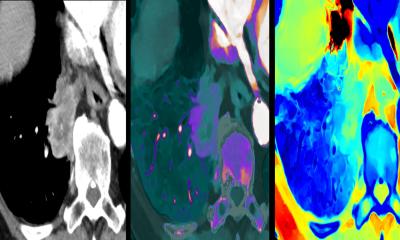Fat data
The Digital Path (ology) to Personalized Medicine
Though it is the underlying science that drives diagnosis and treatment decisions, pathology is an often overlooked field. As part of the health continuum, as the turning point for treatment, as a new source for research and discovery – in all these ways, the power of pathology has gone unnoticed. However, the industry is slowly coming to realize its potential in transforming care, knows Hans Driessen, Philips Digital Pathology Solutions.


Size Does Matter…
In research, size matters. The more information you have, the better; it gives you raw material to work with and it validates your finding. When it comes to pathology, size matters both in terms of how many samples a pathology repository may contain and the size and quality of each piece of data related to those samples.
The Mount Sinai Health System in New York, USA is comprised of seven hospital campuses serving approximately 170,000 inpatients and 2.6 million outpatients annually. Over the years, these facilities have collectively accumulated hundreds of thousands of tissue samples – all existing in the form of glass tissue slides. Though they have historically been used to diagnose and then archived away, these slides hold clues to diseases, treatments and potential breakthroughs. This sheer quantity of data that has been hiding away is the epitome of untapped data. Last year Philips and Mount Sinai announced to create a comprehensive digital image repository containing the digital scans of all these glass tissue slides.
“Big data” may be taking center stage today, but pathology is filled with something that may be even more critical in healthcare – “fat data.” Digitized slides are huge files with extremely high-quality, detailed images that capture secrets of the human body from blood and tissue across a range of diseases. The insights they hold don’t offer the big picture worldview that big data promises, but they are invaluable about a very specific item that could transform care for an individual – or a population.
…But Context Matters More
However, sheer numbers are not enough. How can this data be translated into knowledge? By creating a comprehensive digital image repository of all these slides, researchers and clinicians suddenly have access to a huge library of source material. While having millions of digital pieces of tissue has its own value, that value is multiplied when that data is correlated to other clinical data for a given patient, with that patient’s history in mind. That leads to a much more comprehensive view and analysis of results, treatment protocols and behavior at a personalized level. By taking this information and integrating it; analyzing it; looking at whole slide pathology images from clinical laboratory services, genetic analysis, radiology, and surgical and molecular pathology, the deep and complex puzzle pieces about individualized patient care start to come together.
Unlocking its Secrets
Now take pathology data, in context with healthcare data, and multiply it by hundreds of thousands of cases. The combination of quantity and quality will undoubtedly unlock unique insights that will enable the development of predictive analytics to help personalize patient care. By understanding how diseases and treatments work and being able to look for distinguishing clues, researchers will be able to pursue the discovery of new tissue-based tests and uncover specialized treatments. At the same time, having ready access to high quality information on diseases will allow pathologists to make more confident diagnoses and enable faster intervention. Together, this offers the potential for pathology to drive a new paradigm in healthcare that includes the optimization of treatment efficacy and superior clinical outcomes to maximize personalized patient management.
Additionally, we can start looking at data outside the traditional health continuum. When pharmaceutical companies conduct drug trials, they not only have to track, data to get a drug approved and released but then they track it over time to measure its effectiveness. We have all this data now. Forward-thinking institutions are realizing the promise of digital pathology, and will put the industry on a path to endless opportunities in genomics and personalized medicine. Though pathology has often worked in the background of healthcare, new technologies are enabling a new and exciting opportunity for us to show our value and transform care.
23.05.2016











